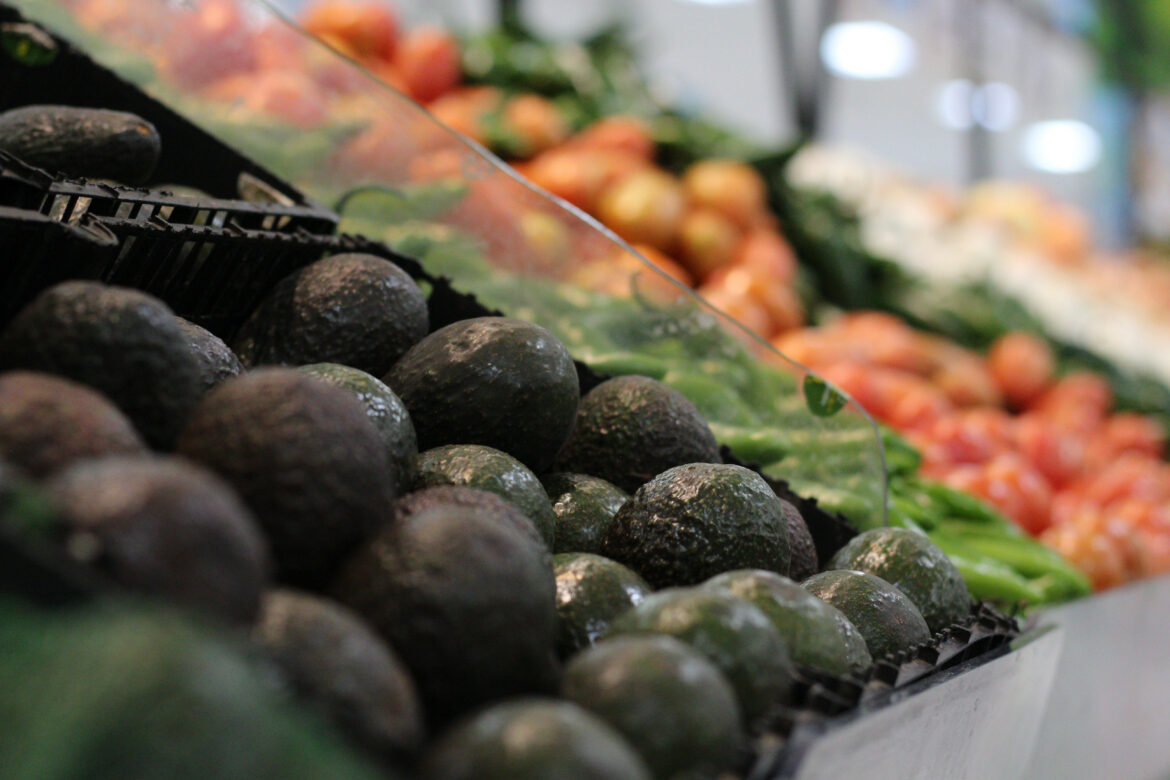EL PASO – Avocados are not cheap in the United States.
Holidays and celebrations increase the demand for this versatile fruit, especially in the Borderland. Super Bowl Sunday in the U.S. is one of the highest days for avocado consumption, and in the border many holidays and celebrations consist of avocado in many forms.
But around here there’s an easy way to pay less for avocados.
Ciudad Juárez, across the border in Mexico.
I have been bringing avocados from across the border for a few years now on my own following what my mom has been doing for decades. Growing up in El Paso it seemed like an ordinary item to bring back. Every month on our trip to Juárez to visit family members, we would stop for a few grocery items and my mom would never forget to packs some avocados. She would pack a good hefty bag to bring back to our house on the East Side of El Paso. Crossing through the Zaragoza bridge, we would present our documents as always, her residency, and three birth certificates in the days before my older brother and I had our passport booklets.
But, it’s not as easy as it seems. Crossing the Mexican avocado from Juárez to El Paso takes a process. Several items cannot cross the border into the United States. Some flowers, fruits, and various meat products of Mexican origin, to name a few, are illegal to bring into the U.S..
Customs and Border Protection say this is implemented to help protect U.S. agriculture and its natural resources. Tiny parasites or diseases can hide within these products and the avocado pit is one of their hiding places. So, to cross the rich avocado to El Paso there are several things you need to know beforehand.
Selecting the avocados
I usually visit an S-Mart or a Soriana, the larger grocery store chains on the Mexican side of the border. I arrive to the fruit and vegetable section and pick my avocados. I usually do half ripe and the other half not so ripe, because as you know avocados tend oxidize pretty quickly after being exposed.

Man picking avocados
Remove the pit
The most important step follows to ensure you can bring your Mexican avocados into El Paso. Looking for a store worker to remove the pit from the avocados is crucial and is what will allow me to cross them back to El Paso.
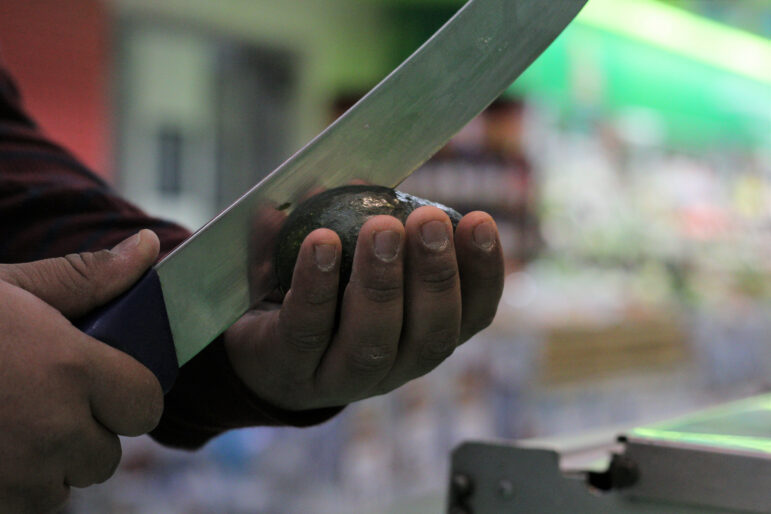
The worker begins cutting the avocados in half to remove the pit.
The worker takes my avocados and splits them in half, removes the pit, puts them back together to form a whole avocado and wraps each one individually in food wrap.
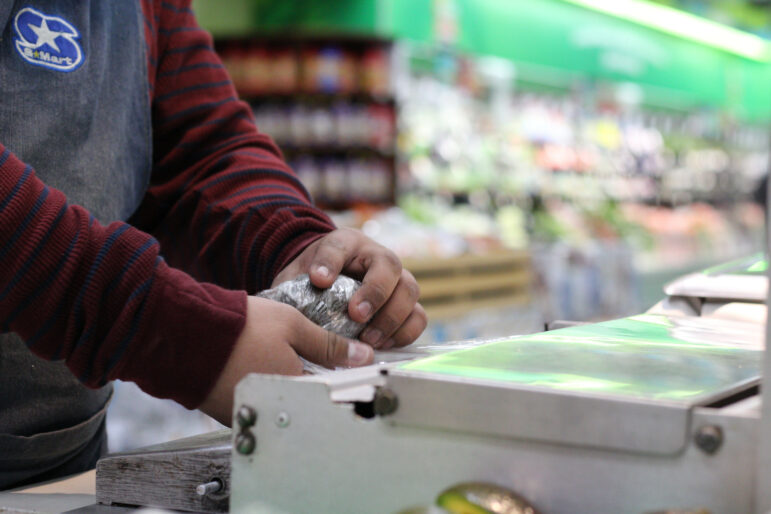
The worker then places the avocados in one bag, and the pits in another.
Pay the full weight
When going to the register to pay, the avocados and pits must both be taken so that they can be weighed together and thus get the price per kilo that must be payed. Recently however, I’ve also seen the worker that removed the pit place a barcode outside the wrapped avocados with the total weight so the cashier can simply scan the code and determine the total price without needing the avocado pits.
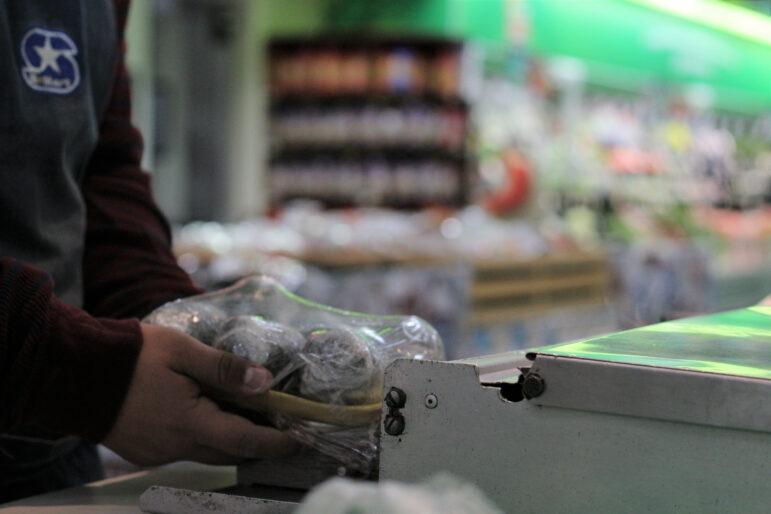
Toss the pits after paying
Once I’ve paid I look for a garbage dump to be able to throw the pits and finally be able to cross the avocados over.

Beyond the Customs and Border Protection zone, downtown El Paso and the Franklin Mountains.
Declare them at the U.S. port of entry
After throwing away the pits, it is very important to store your avocados in a visible place if you are traveling by car, or somewhere easy to access if you are walking over, because, YOU MUST DECLARE THE AVOCADOS!
When you arrive at the booth to show your documents, the officer asks you if you have things to declare. You declare your avocados and let the officer know the pit has been removed and just like that your Mexican Avocados have made it into the U.S.
Great savings
Many people – even those who live along the border – don’t realize that you can bring avocados to El Paso with the right steps. The Mexican avocado is usually much cheaper than the one sold in the United States. Almost always half the cost. You can buy a kilo of avocado, which is more or less 6 avocados for 50 pesos or $2.50. In El Paso the avocado is sold individually with a price between 50 cents to 2 dollars each.
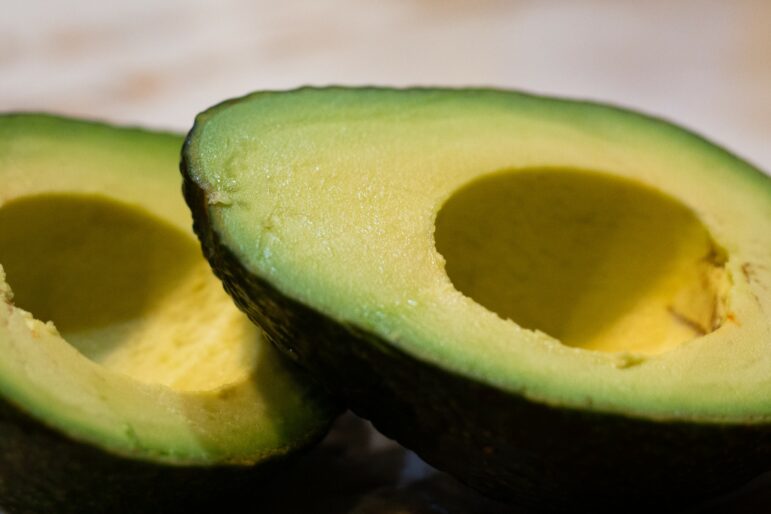
The avocados arrive at my house without a pit and so should be stored in the fridge to better preserve them.
Store avocados properly
Remember to keep them refrigerated so they can stay fresh. And don’t freak out if they get a little brown. It’s part of their natural process when exposed to air. It doesn’t mean they have gone bad. I tend to simply remove the bits that are maybe too brown. I throw my avocados in a bowl, a little bit of milk and salt and mash them up with a fork to use really on anything – toast, tostadas or a sandwich.
My trips to Juarez at most are once or twice a month and it is always worth stopping by for a bag of avocados to bring home.

